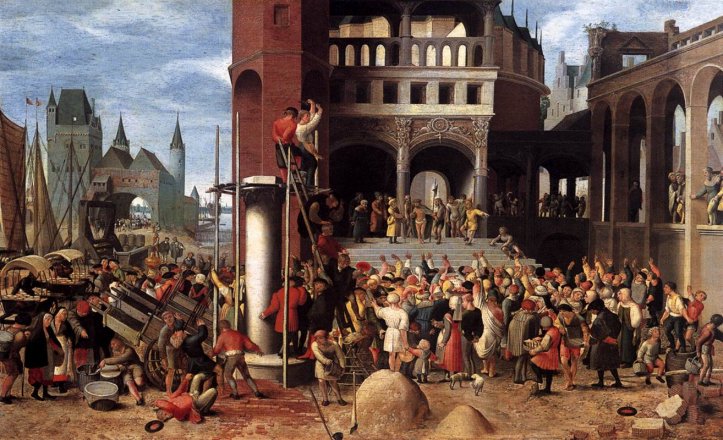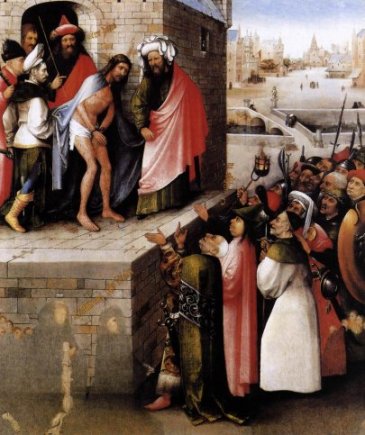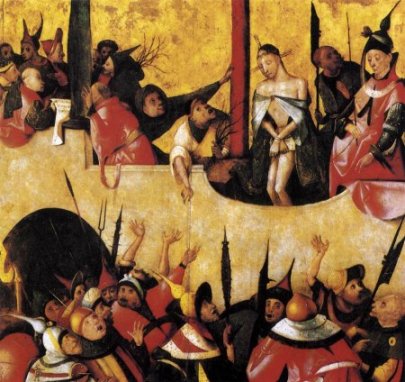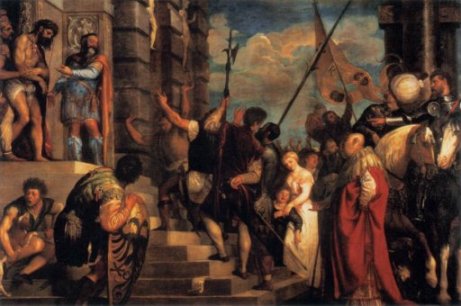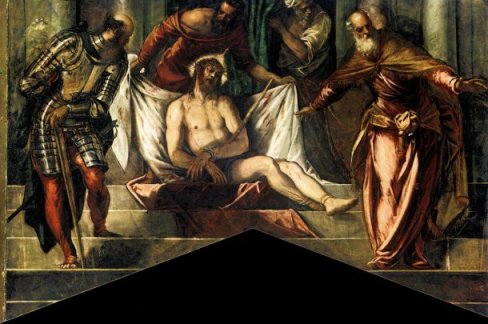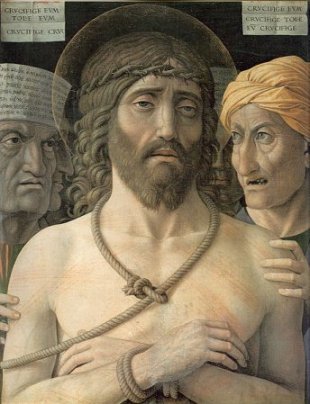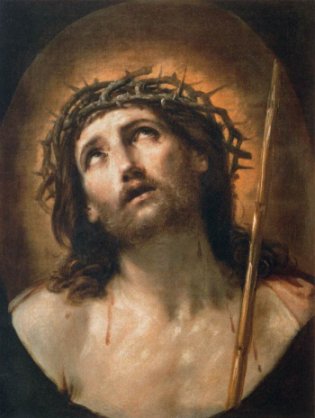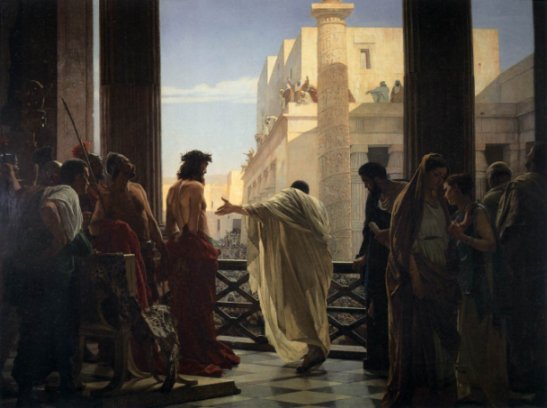|
The Passion of Christ |
|
|
Ecce Homo |
|
|
Pilate therefore went
forth again, and saith unto them, Behold, I bring him forth to you, that
ye may know that I find no fault in him. Then
came Jesus forth, wearing the crown of thorns, and the purple robe. And
Pilate saith unto them, Behold the man! John 19 v 4/5 Bosch's two version are typically quirky. |
|
|
|
|
|
|
|
|
Titian's painting from around 1543 (below left) continues the narrative approach, but Tintoretto's version from twenty-five or so years later focuses far more on the suffering figure of Christ. |
|
|
|
|
| As I suggested when discussing the preceding events of the mockery and crowning with thorns, as time passed there was a need for less narrative, and for more devotional images. These dispensed with the crowds and focussed simply on the suffering Christ - behold the man, not everyone else. Interestingly, one of the (in my view) finest examples of this preceded Titian and Tintoretto - this is the painting by Mantegna (below left) from around 1506. Admittedly there are a couple of other heads there, but the focus is on Christ himself. the other painting is by Guido Reni. Verging on sentimentality? I'll leave you to decide. | |
|
|
|
|
Finally, a highly regarded late nineteenth century version by Anotnio Ciseri in the Pitti Palace in Florence. A daringly unusual angle - but what is Trajan's column doing in Jerusalem? |
|
|
|
|
